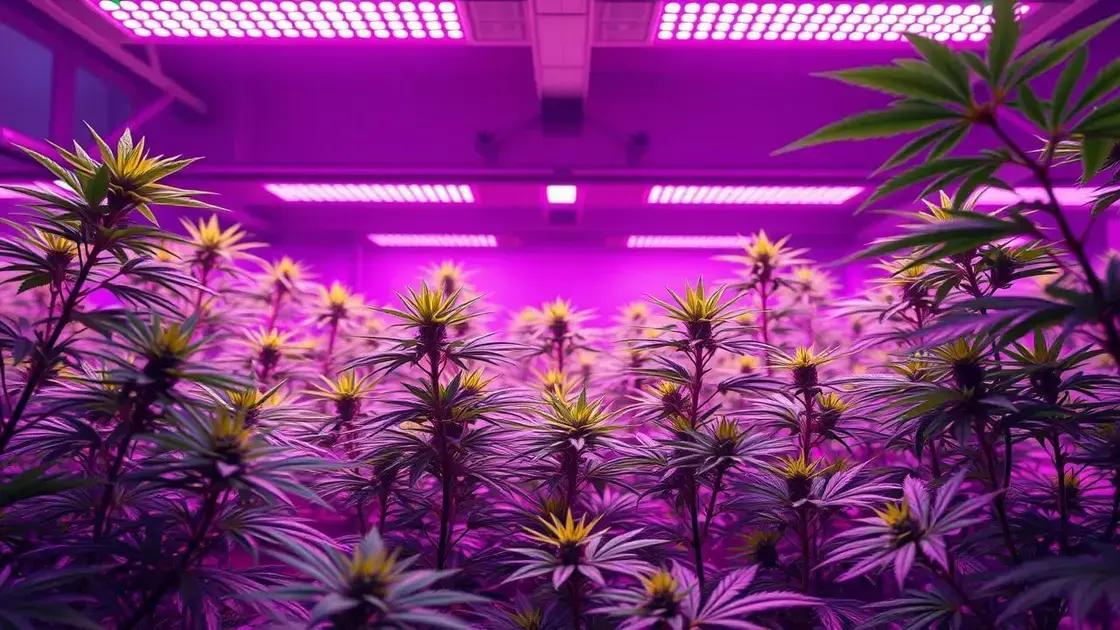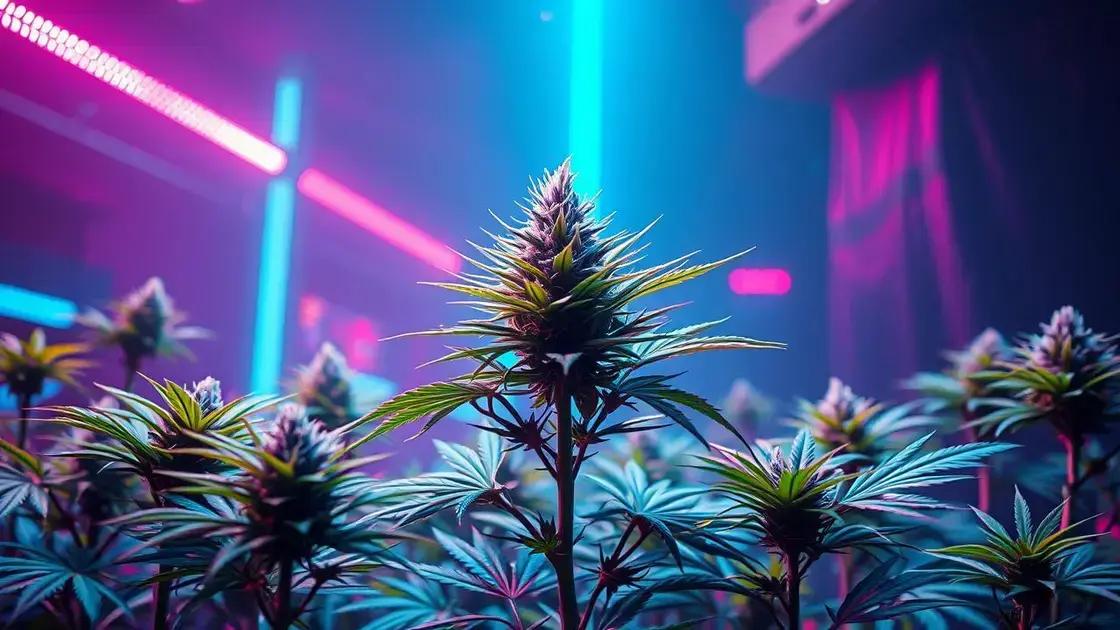How to Take Care of a Cannabis Plant: 7 Vital Tips for Success
How to take care of a cannabis plant is a question many new growers ask. Imagine nurturing a plant that potentially yields bountiful, aromatic buds. From selecting the right soil to mastering watering techniques, this guide will explore practical and engaging ways to enhance your cannabis cultivation journey.
Table of Contents
ToggleEssential nutrients for healthy cannabis plants
Essential nutrients for healthy cannabis plants are vital for ensuring robust growth and maximizing yields. Understanding the various nutrients and how they affect your cannabis plants is key to successful cultivation. Cannabis plants require a balanced nutritional profile that includes macronutrients and micronutrients for optimal health.
Nutrients overview
- Macronutrients: These are required in larger quantities and include nitrogen (N), phosphorus (P), and potassium (K).
- Micronutrients: Essential in smaller amounts, these include calcium, magnesium, sulfur, iron, manganese, and zinc.
The role of primary macronutrients
- Nitrogen (N): Crucial for vegetative growth and creating proteins.
- Phosphorus (P): Supports energy transfer and root development.
- Potassium (K): Regulates water uptake and enhances disease resistance.
Micronutrients in cannabis cultivation
- Calcium: Strengthens cell walls and aids in nutrient uptake.
- Magnesium: Vital for photosynthesis and enzyme function.
- Sulfur: Supports amino acid and protein synthesis.
Best sources of nutrients
Utilize organic and synthetic fertilizers that provide essential nutrients, such as:
- Compost and worm castings for a holistic approach.
- Hydroponic nutrient solutions for efficient growth.
Creating a nutrient schedule
Establish a nutrient feeding schedule that aligns with the growth phases of cannabis:
- Seedling stage: Use a diluted nutrient solution.
- Vegetative stage: Increase nitrogen levels.
- Flowering stage: Shift focus to phosphorus and potassium.
Signs of nutrient deficiencies
Identifying deficiencies early can save your plants. Common signs include:
| Nutrient | Deficiency Symptoms |
|---|---|
| Nitrogen | Yellowing leaves, stunted growth |
| Phosphorus | Purple stems and leaves |
| Potassium | Brown leaf edges, poor fruiting |
For more in-depth information on ideal nutrient levels and management for cannabis, consider exploring indoor gardening techniques.
Meta description
Essential nutrients for healthy cannabis plants ensure robust growth and maximize yields. Maximize your cannabis cultivation success with nutrient insights.
Understanding lighting for optimal cannabis growth

Understanding lighting for optimal cannabis growth is essential for any cultivator aiming for a thriving indoor garden. The right lighting dramatically affects the health, yield, and quality of your cannabis plants. Ensuring they receive the proper light spectrum and intensity is crucial throughout their growth stages.
Types of lighting for cannabis cultivation
- LED lights: Energy-efficient and customizable spectrums, ideal for all growing stages.
- HID lights: High-intensity discharge lights like HPS (High-Pressure Sodium) offer excellent yield but consume more energy.
- CFL lights: Compact fluorescent lights are effective for smaller grows or seedlings due to their low heat output.
Light spectrum importance
Different stages of cannabis growth require varying light spectra. Here’s a breakdown:
- Seedling stage: Use a light with a blue spectrum (400-500 nm) to promote leafy growth.
- Vegetative stage: Maintain a balance of blue and red light (500-700 nm) for healthy plant development.
- Flowering stage: Optimize red light (600-700 nm) to encourage blooming and bud production.
Light duration and photoperiod
Establishing the right light duration is crucial in different growth phases:
- Seedling/Cloning: 18-24 hours of light daily.
- Vegetative: 18 hours of light, 6 hours of darkness.
- Flowering: 12 hours of light, 12 hours of darkness.
Signs of improper lighting
Understanding the signs of inadequate lighting will help you quickly address issues:
| Lighting Issue | Symptoms |
|---|---|
| Too much light | Leaf burn, drooping leaves |
| Too little light | Stretching, pale leaves |
For more in-depth information on enhancing your lighting setup, consider exploring indoor gardening techniques.
Meta description
Understanding lighting for optimal cannabis growth ensures healthy plants and maximum yields. Discover essential lighting tips for your indoor garden.
Effective watering strategies for cannabis care
Effective watering strategies for cannabis care are crucial for ensuring strong, healthy plants that can produce abundant yields. Proper watering techniques help prevent issues such as root rot, nutrient lockout, and under-/over-watering. Understanding how to water your cannabis plants correctly is essential for successful cultivation.
Watering frequency based on growth stages
- Seedling stage: Water every 2-3 days to maintain moisture without saturated soil.
- Vegetative stage: Increase watering to every 1-2 days as roots establish.
- Flowering stage: Monitor closely; a schedule of every 2-3 days works well, depending on environmental conditions.
Signs of proper watering
Recognizing healthy plants can help gauge if your watering technique is effective:
- Bright green leaves without curling.
- Strong, upright stems indicating adequate hydration.
- Moist, but not soggy, soil.
Techniques for effective watering
Utilize smart watering practices to enhance growth and reduce waste:
- Deep watering: Ensure water reaches the root zone by applying water slowly and in larger quantities.
- Drainage management: Use pots with drainage holes to prevent water buildup.
- Water temperature: Use room-temperature water to avoid shocking the roots.
Water quality considerations
Choosing the right water type is essential:
- Use filtered or distilled water to reduce contaminants.
- Avoid chlorinated water, which can harm beneficial microbes in the soil.
- Monitor pH levels to ensure optimal nutrient uptake (ideally between 6.0 – 7.0 for soil).
Tips for maintaining moisture levels
To keep your cannabis plants thriving:
- Check soil moisture regularly with your finger or a moisture meter.
- Mulch around the base to retain moisture and regulate soil temperature.
- Implement drip irrigation systems for consistent watering.
For additional insights and tips on cannabis care, consider exploring indoor gardening techniques.
Meta description
Effective watering strategies for cannabis care ensure healthy growth and prevent issues. Learn proper watering techniques and tips for thriving plants.
In conclusion
Caring for cannabis plants involves a comprehensive understanding of essential factors such as nutrients, lighting, and effective watering strategies. By implementing the tips and techniques outlined in this guide, you can cultivate healthy plants that yield exceptional results. Remember to monitor your plants regularly and adjust your practices as necessary to meet their evolving needs. For additional tips on enhancing your indoor garden, explore the resources available to you.

